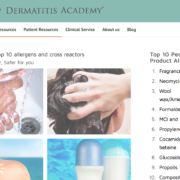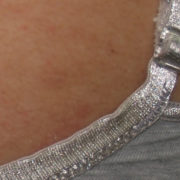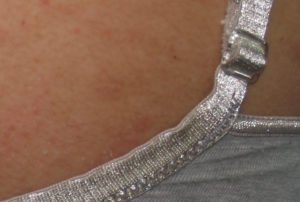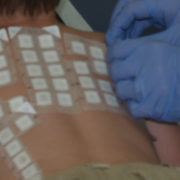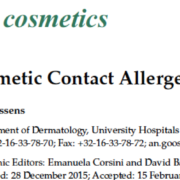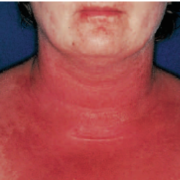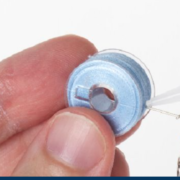Contact allergens induce long lasting local skin memory and global immunologic memory
‘[Contact allergens induce a strong, long-lasting local memory and a weaker, temporary global immunological memory response that is mediated skin-resident memory cells.]’
Schmidt JD1,2, Ahlström MG2, Johansen JD2, Dyring-Andersen B1,2, Agerbeck C1, Nielsen MM1, Poulsen SS3, Woetmann A1, Ødum N1, Thomsen AR1, Geisler C1, Bonefeld CM1. Rapid allergen-induced interleukin-17 and interferon-γ secretion by skin-resident memory CD8+ T cells. Contact Dermatitis. 2016 Nov 22. doi: 10.1111/cod.12715. [Epub ahead of print]
BACKGROUND:
Skin-resident memory T (TRM ) cells are associated with immunological memory in the skin. Whether immunological memory responses to allergens in the skin are solely localized to previously allergen-exposed sites or are present globally in the skin is not clear. Furthermore, the mechanisms whereby TRM cells induce rapid recall responses need further investigation.
OBJECTIVES:
To study whether contact allergens induce local and/or global memory, and to determine the mechanisms involved in memory responses in the skin.
METHODS:
To address these questions, we analysed responses to contact allergens in mice and humans sensitized to 2,4-dinitrofluorobenzene and nickel, respectively.
RESULTS:
Challenge responses in both mice and humans were dramatically increased at sites previously exposed to allergens as compared with previously unexposed sites. Importantly, the magnitude of the challenge response correlated with the epidermal accumulation of interleukin (IL)-17A-producing and interferon (IFN)-γ-producing TRM cells. Moreover, IL-17A and IFN-γ enhanced allergen-induced IL-1β production in keratinocytes.
CONCLUSIONS:
We show that sensitization with contact allergens induces a strong, long-lasting local memory and a weaker, temporary global immunological memory response to the allergen that is mediated by IL-17A-producing and IFN-γ-producing CD8+ TRM cells.

